Are you on the hunt for alliteration poems for kids to share with your primary classroom? You may be covering a unit about poetry or teaching your little learners how to practise figurative language styles. Either way, using examples of real poems packed with alliteration is a fun way to help kids memorise text and craft their creative writing skills.
The Teach Starter teacher team has donned their wordsmith hats and pulled out 10 alliteration poem examples perfect for sharing with your primary students, plus a few popular songs that will get their attention!
Challenge your students to identify the repeated consonants in each poem, or use these alliteration poems as a prompt for kids to practise penning their own alliteration in a poem.
What Are Alliteration Poems?
Are you looking for a kid-friendly definition of what an alliteration poem is? You’ve struck gold!
Alliteration poetry is a form of poetry that plays on the use of words with the same beginning sound. Alliteration can be created when two or more words in a line or verse of a poem start with the same letter or sound, for example, ‘the slippery snake slithered past the slippery slide.’
Why Is Alliteration Used in Poems?
Like alliteration in a catchy slogan or headline, alliteration in poems grabs the reader’s attention and has a memorable effect. In children’s poetry and nursery rhymes, the repetition of consonant sounds adds a playful, rhythmic tone to engage and spark the imagination of young readers.
If you’ve ever stumbled trying to read an alliteration poem aloud, you’re not alone! The repetition of sounds and similar words can be real tongue twisters, but that’s part of what it makes them so engaging for kids as you introduce the components of poetry and different types of poetic devices.
Alliteration Poem Examples
1. Bad Blood – Taylor Swift
Wait, a Taylor Swift song? Songs are essentially poems set to music, and pulling in popular songs is a perfect way to capture your students’ attention, so let’s start things off strong!
Here’s an alliterative example that any Swifties in your class are sure to recognise:
‘Cause baby, now we got bad blood’
The repetition of the letter ‘b’ stands out in this Swift classic and is a great example of alliteration all around us! Why not play the song, then lead a class brainstorm, challenging students to think of other pop songs that use alliteration to capture attention?
2. Peter Piper — Author Unknown
This is more of what you expected, isn’t it? Peter Piper is a classroom classic, and with the heavy repetition of the letter ‘p,’ the nursery rhyme makes a perfect example of alliteration in a poem and a serious tongue twister to read aloud.
‘Peter Piper picked a peck of pickled peppers.
A peck of pickled peppers Peter Piper picked.
If Peter Piper picked a peck of pickled peppers,
How many pickled peppers did Peter Piper pick?’
After plumbing the depths of Peter Piper, ask your students to create their own tongue twisters using different initial consonant sounds.
3. Betty Botter’s Butter — Mother Goose
‘Betty Botter bought some butter,
But, she said, this butter’s bitter;
If I put it in my batter,
It will make my batter bitter,
But a bit of better butter,
That would make my batter better.’
Betty Botter is another beloved nursery rhyme and a tricky tongue twister to recite. It is also a brilliant reference text to introduce the use of alliteration in poems to your kids. The letter ‘b’ is repeated throughout, creating a fun sing-song rhythm for kids to help them memorise it.
After reading it aloud, hand out copies for each student, and students read the poem silently, underlining words with the same initial consonant sound.
Print a Betty Botter cut and paste worksheet!
4. Silly Sally — Audrey Wood
‘Silly Sally swiftly shooed seven silly sheep.
The seven silly sheep Silly Sally shooed
shilly-shallied south.
These sheep shouldn’t sleep in a shack;
sheep should sleep in a shed.’
The consonant sound created by the letter ‘s’ can be super challenging to pronounce, especially when repeated. That is what makes Silly Sally an excellent example of an alliteration poem. After reading the poem, you can ask the students to create their own alliterative phrases using other letters of the alphabet.
5. I Saw An Ol’ Gnome — Shel Silverstein
‘I saw an ol’ gnome
Take a gknock at a gnat
Who was gnibbling the gnose of his gnu?
I said, ‘Gnasty gnome,
Gnow, stop doing that.
That gnat ain’t done gnothing to you.’
He gnodded his gnarled ol’ head and said,
“‘Til gnow I gnevergnew
That gknocking a gnat
In the gnoodle like that
Was gnot a gnice thing to do.’
This quirky poem about a ‘gnasty’ gnome is another fun one for kids to learn! The repeated sounds created by the letters ‘g’ and ‘n’ are riddled throughout the text. Popular poet Shel Silverstein has also added an extra layer of playfulness with the inclusion of nonsense words to engage little readers. Gnow that’s a great idea!
6. She Sells Seashells — Terry Sullivan
‘She sells seashells by the seashore,
The shells she sells are seashells, I’m sure.
So if she sells seashells on the seashore,
Then I’m sure she sells seashore shells.’
Written back in 1908 by British songwriter Terry Sullivan, She Sells Seashells has been a classic tongue twister for many generations of kids. After encouraging your class to identify the repetition of the letter ‘s’ similar words such as ‘seashells’ and ‘seashore,’ challenge your students to read the poem aloud without stumbling or mispronouncing any words. We’ll wait!
7. The Football Game — Alan Loren
‘Blitz and blocking, bump –and-run
Drive and drop kick, the other team’s done
End zone, end line, ebb and flow
Snap, sack, scrambling, I love it so
Football is fun and fabulous too
Let’s go to the stadium, just me and you.’
This tongue twister by Alan Loren takes children’s alliteration poetry to the next level by including a different repeated letter in each verse. For example, you will find the letter ‘b’ repeated in the first verse but then ‘d’ sprinkled in the second line.
You could use this text to familiarise your learners with different styles of alliteration in poems and use it as a writing prompt for kids to pen a short story about their favourite sport.
8. Eat Wisely — Alan Loren
‘Franks and fries, and French fondue
Beans and burgers and biscuits too
Chicken, chili, and cheddar cheese
When I munch too much, I always sneeze!’
Are you looking to start with an easy alliteration poem? Eat Wisely by Alan Loren is another example of using various consonant sounds such as the letter ‘f’, ‘b’ and ‘c’ to craft a poem with alliteration without being tough to read aloud.
This poem is also a great transition into discussions about the importance of a balanced diet and a way to remember which foods should be munched in moderation.
9. Spinning Dry — Denise Rodgers
‘If I had a choice when it’s time to get clean
I’d like to jump into our washing machine
for sudsing and soaking and rolling and churning
and bobbing and bubbling and twisting and turning.
Next, come my chance to feel just like a flyer
as I get to hop out and spin in the dryer.
I’d roll all around with a fluttering flopping,
just floating and turning with no thought of stopping.
It sounds like such fun, this incredible fling,
that I wouldn’t mind if I got static cling.’
Spinning Dry is an imaginative and entertaining poem that paints a story of what it would be like to take a bath in a washing machine, which we’re sure little readers would find hilarious. With alliteration and rhyming, such as ‘fling’ and ‘cling,’ the words roll off the tongue to make it enjoyable for kids to follow.
10. Bear in There — Shel Silverstein
‘There’s a polar bear
In our Frigidaire-
He likes it ’cause it’s cold in there.
With his seat in the meat
And his face in the fish
And his big hairy paws
In the buttery dish,
He’s nibbling the noodles,
He’s munching the rice,
He’s slurping the soda,
He’s licking the ice.
And he lets out a roar
If you open the door.
And it gives me a scare
To know he’s in there-
That polary bear
In our Fridgitydaire.’
Here’s another humorous alliteration poem to spark the interest of little readers! Silverstein has scattered alliteration and rhyme throughout the text to tell the story of a child discovering an unruly polar bear feasting in the fridge. Lines such as “He’s nibbling the noodles” and “With his seat in the meat” make the poem flow and easy to memorise, as well as build a fun story to keep kids interested…because how cool would it be to find a polar bear in your fridge?!
Silverstein’s body of work is a treasure trove of alliteration poems for kids that feature the figurative device and play on themes that will engage students. Here are a few more favourites among our teacher team:
- Poemsicle
- Picture Puzzle Piece
- Standing Is Stupid
- Spoiled Brat
- Rotten Convention
- Mari-Lou’s Ride
11. Slithery, Slidery, Scaly Old Snake — Denise Rodgers
‘Slithery, slidery, scaly old snake,
surely your body must be a mistake.
Your eyes, mouth and tongue wisely stay on your head.
It seems that your body is all tail instead.
You gobble your dinner, you swallow it whole —
a mouse or a frog or a turtle or mole.
Ugh!
Why don’t you eat ice cream or chocolatey cake!
Oh slithery, slidery, scaly old snake.’
Poet Denise Rodgers has playfully repeated the letter ‘s’ and weaved in rhyming words to describe the behaviour of a snake from a child’s perspective. Slip this sneaky poem into your English lessons, and help your class master alliteration and rhyme.
Additional Alliteration Activities
Are you looking for more activities about alliteration to add to your arsenal? Here are a few favourites from our teacher team!
- Challenge students to create a figurative language board game that includes alliteration. Print off a blank board game to use as a base.
- Create alliterative ice cream flavours with a tasty task.
- Have your students rewrite the lyrics from popular songs to feature alliteration.




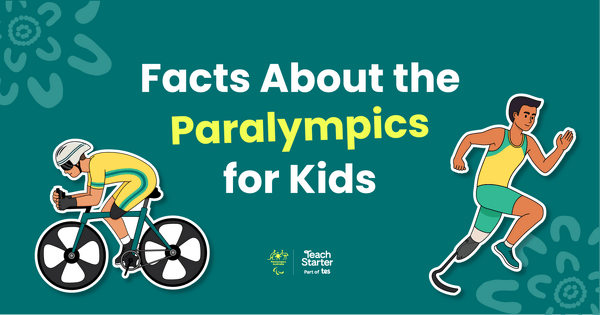

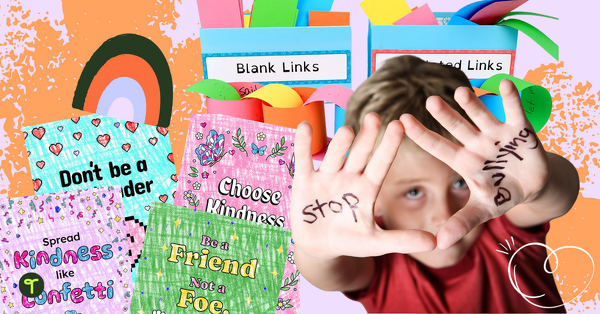
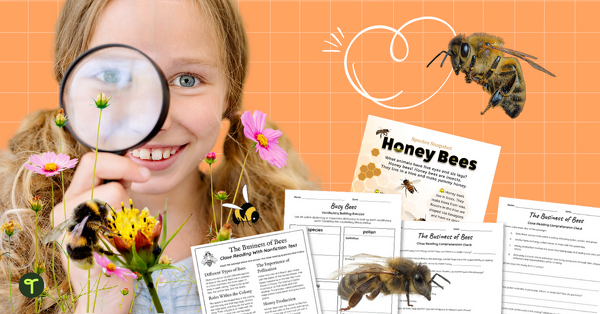
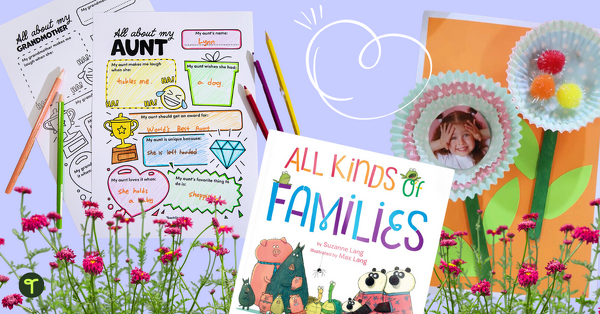
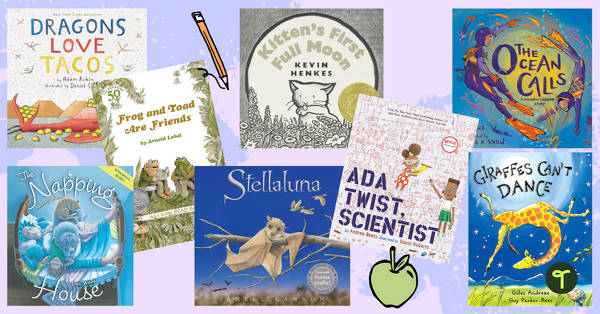
Comments